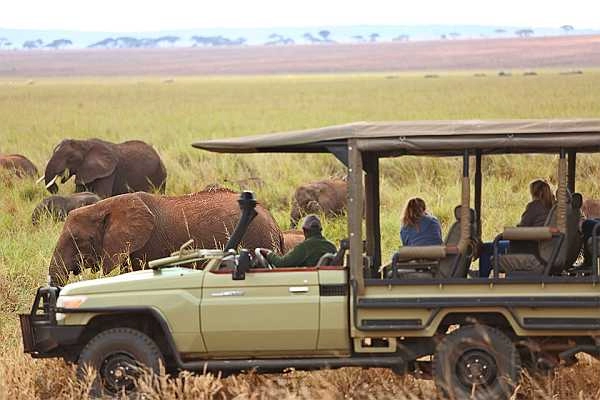Tarangire’s huge herds of elephant rival the park’s gigantic, squat baobab trees as its most celebrated feature –ancient matriarchs, feisty young bulls and tiny, stumbling calves are ever present to fascinate visitors with their grace, intelligence and majesty.

Tarangire National Park has some of the highest population density of elephants anywhere in Tanzania, and its sparse vegetation, strewn with baobab and acacia trees, makes it a beautiful and special location. Located just a few hours drive from the town of Arusha, Tarangire is a popular stop for safaris travelling through the northern circuit on their way to Ngorongoro and the Serengeti.
During Tarangire’s dry season, day after day of cloudless skies seem to suck all moisture from the landscape, turning the waving grasses to platinum blonde, brittle as straw. The Tarangire River is a mere shadow of itself, just a trickle of water choked with wildlife; thirsty antelope and elephant have wandered hundreds of parched kilometres to Tarangire’s permanent water source.
Herds of elephant three hundred strong dig in the damp earth of the riverbed in search of underground springs, while wildebeest, zebra, buffalo, and gazelle mingle with rare species such as eland and oryx around each shrinking lagoon. Python climb into the shade of the trees that line Tarangire’s massive southern swamps and hang there like giant malignant fruit, coils neatly arranged over the branches in a perfect sphere. Tarangire in the dry season enjoys the greatest concentration of wildlife outside the Serengeti ecosystem.
The best time to visit Tarangire for a safari is the dry season, from June to October.
